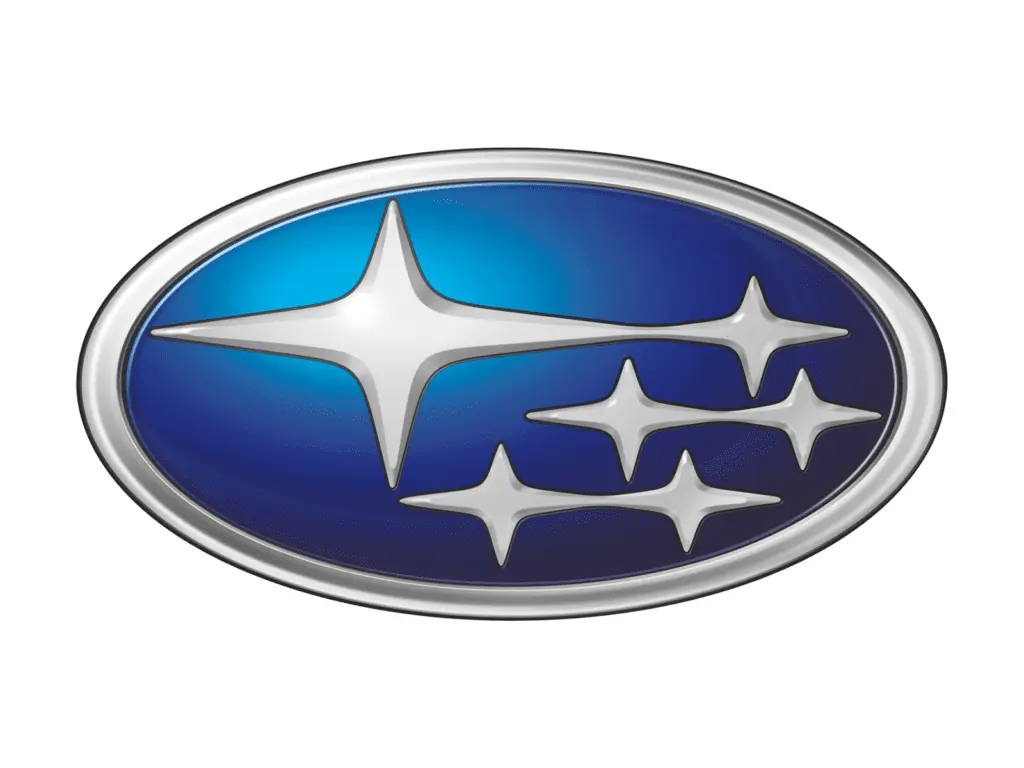
History of the Subaru car brand
These Japanese vehicles are owned by Subaru Corporation. The company manufactures vehicles for both the consumer market and commercial purposes.
The history of Fuji Heavy Industries Ltd., whose trademark is Subaru, begins back in 1917. However, the automotive history got its start only in 1954. Subaru engineers create a new prototype of the P-1 car body. In this regard, it was decided to select a name for a new car brand on a competitive basis. Many options were considered, but it is "Subaru" that belongs to the founder and head of FHI Kenji Kita.
Subaru means unification, literally "to put together" (from Japanese). The constellation "Pleiades" is called by the same name. It seemed to China quite symbolic, so it was decided to leave the name, because the HFI concern was founded as a result of the merger of 6 companies. The number of companies corresponds to the number of stars in the constellation "Pleiades" that can be seen with the naked eye.
Founder

The idea of creating one of the first passenger cars of the Subaru brand is the founder and head of Fuji Heavy Industries Ltd. - Kenji Kita. He also owns the name of the car brand. He himself took part in the design and bodywork of the P-1 (Subaru 1500) in 1954.
In Japan, after the hostilities, there was a crisis in mechanical engineering, resources in the form of raw materials and fuel were sorely lacking. In this regard, the government was forced to adopt a law stating that passenger cars up to 360 cm in length and with a fuel consumption not exceeding 3,5 liters per 100 km were subject to a minimum tax.
It is known that Kita at that time was forced to purchase several drawings and plans for the construction of cars from the French concern Renault. With their help, he was able to create a car suitable for the Japanese man in the street, suitable for the lines of the tax law. It was a Subaru 360 from 1958. Then the loud history of the Subaru brand began.
Emblem

The Subaru logo, oddly enough, repeats the history of the name of the car brand, which translates as the constellation "Pleiades". The emblem depicts the sky in which the constellation of the Pleiades shines, consisting of six stars that can be seen in the night sky without a telescope.
Initially, the logo did not have a background, but was depicted as a metal oval, empty inside, on which the same metal stars were located. Later, designers started adding color to the sky background.

More recently, it was decided to completely repeat the Pleiades color scheme. Now we see an oval in the color of the night sky, on which six white stars stand out, which creates the effect of their glow.
Vehicle history in models



Throughout the history of the Subaru automobile brand, there are about 30 basic and about 10 additional modifications in the collection of models.
As mentioned above, the first models were the P-1 and Subaru 360.
In 1961, the Subaru Sambar complex was founded, which develops delivery vans, and in 1965 expanded production of large cars with the Subaru 1000 line. The car is equipped with four front drive wheels, a four-cylinder engine and a volume of up to 997 cm3. Engine power reached 55 horsepower. These were boxer engines, which were subsequently constantly used in Subaru's lines.
When sales in the Japanese market began to grow rapidly, Subaru decided to start selling cars abroad. Attempts to export from Europe began, and later to the USA. During this time, the subsidiary Subaru of America, Inc. is founded. in Philadelphia to export the Subaru 360 to America. The attempt was unsuccessful.
By 1969, the company was developing two new modifications of existing models, launching the P-2 and Subaru FF on the market. The prototypes of the new products were the R-1 and Subaru 1000, respectively. In the latest model, engineers increase the engine displacement.
In 1971, Subaru released the world's first four-wheel drive passenger car, which attracted great interest from both consumers and world experts. This model was the Subaru Leone. The car took its place of honor in a niche where it had practically no competition. In 1972, the R-2 was restyled. It is replaced by the Rex with a 2-cylinder engine and a volume of up to 356 cc, which is complemented by water cooling.
In 1974, the export of Leone cars began to develop. They are being successfully bought up in America as well. The company is increasing production and the percentage of exports is growing rapidly. In 1977, deliveries of the new Subaru Brat began to the American car market. By 1982, the company began production of turbocharged engines.
In 1983, begins production of all-wheel drive Subaru Domingo.
1984 saw the release of the Justy, equipped with an ECVT electronic variator. About 55% of all cars produced are exported. The number of cars produced annually was about 250 thousand.
In 1985, the top-end supercar Subaru Alcyone enters the world arena. The power of its six-cylinder boxer engine could reach up to 145 horsepower.
In 1987, a new modification of the Leone model was released, which completely replaced its predecessor on the market. Subaru Legacy is still relevant and in demand among buyers.
Since 1990, the Subaru concern has been actively developing in rally sports and Legacy has become the main favorite at major tournaments.
Meanwhile, a small Subaru Vivio is coming out to consumers. He also came out in the "sport" package.
In 1992, the concern releases the Impreza model, which becomes a true benchmark for rally cars. These cars came in different modifications with different engine sizes and modern sports components.
In 1995, in the wake of an already successful trend, Subaru launched the Sambar EV electric car.
With the release of the Forester model, modifiers have long tried to give a classification to this car, because its configuration resembled something similar to both a sedan and an SUV. Another new model went on sale and replaced the Vivio with the Subaru Pleo. It also immediately becomes Japan's Car of the Year.
Back in 2002, motorists saw and appreciated the new Baja pickup, based on the Outback concept. Subaru cars are now produced at 9 factories around the world.
Questions and answers:
What does the Subaru badge represent? This is the Pleiades star cluster located in the constellation Taurus. This emblem symbolizes the formation of the parent and subsidiary companies.
What does the word Subaru mean? From Japanese the word is translated as "seven sisters". This is the name of the Pleiades cluster M45. Although 6 stars are visible in this cluster, the seventh is not actually visible.
Why Subaru has 6 stars? The largest star represents the parent company (Fuji Heavy Industries), and the other five stars represent its subsidiaries, including Subaru.
